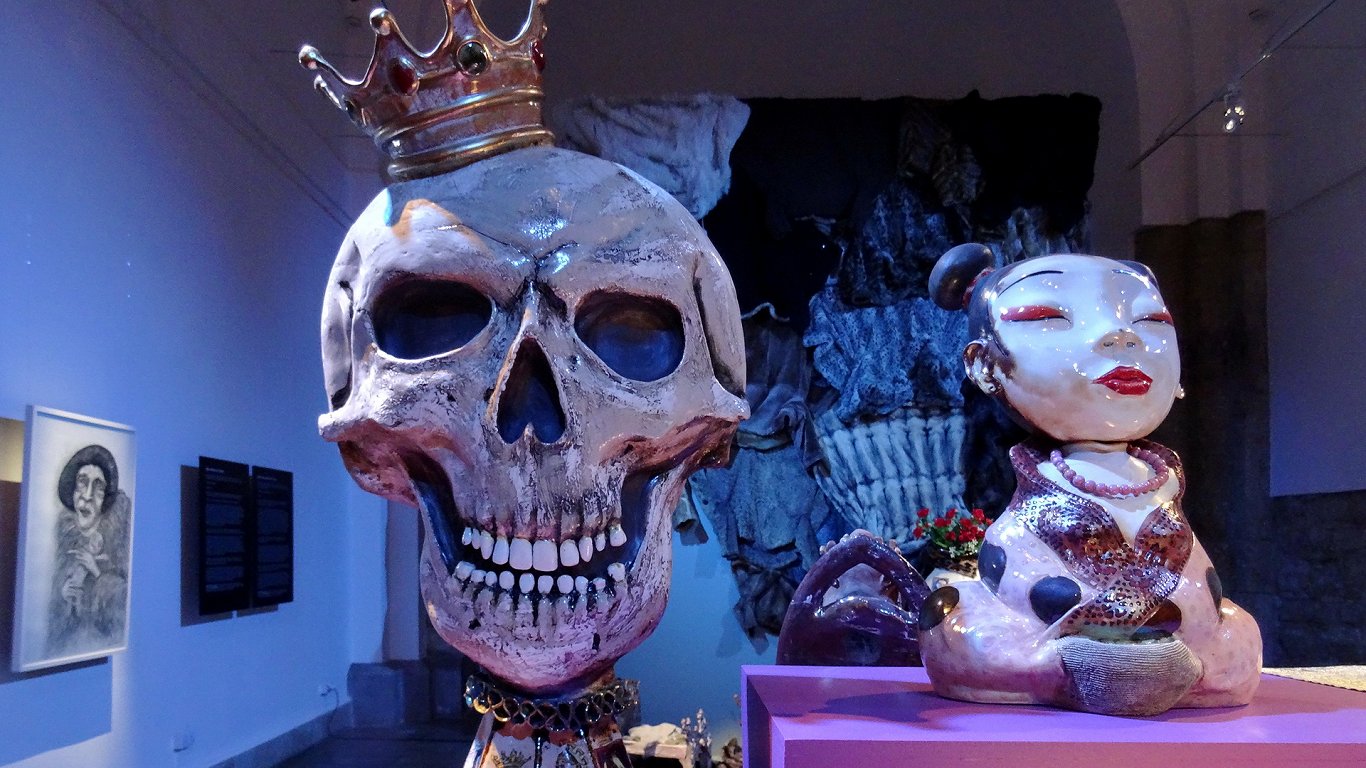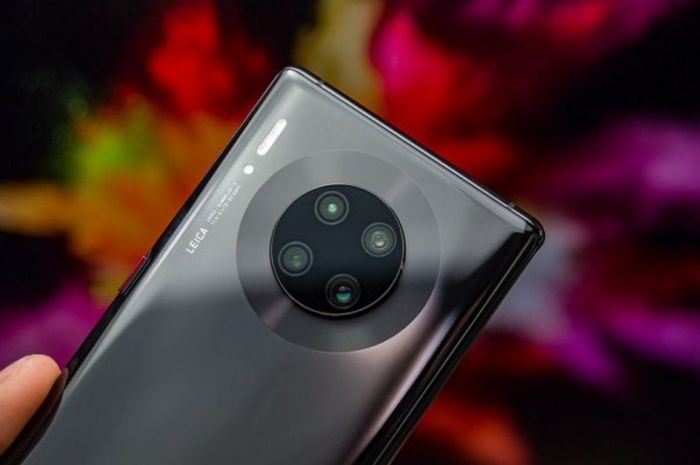Skuja Braden, Valdis Celma, Kaspars Groševs and Līga have been nominated by the Purvītis Prize Expert Working Group for the exhibition, which will be presented in April 2021, after evaluating the exhibitions and works of artists that were on view from July 1, 2020 to September 30, 2020. Spunde’s works, the representatives of the award informed.
“Samsara”
It was decided to nominate Skuja Braden’s exhibition “Samsara” for the award, especially highlighting the central part of the exhibition “Ilga’s Altar”. The exhibition was on view at the Museum of Decorative Arts and Design from March 14 to September 27.
Curator, art historian and head of the Latvian Center for Contemporary Art Solvita Krese substantiated the nomination: “Skuja Braden’s creative activity in the Latvian art scene was a bright, independent and unusual phenomenon, which has become especially noticeable now, in tune with world feminist narratives and ceramics as creative ideas. manifestation type of renaissance.
In the exhibition “Samsara”, grotesque wires and portraits of contemporaries, skulls vibrating in a macabre mood and a parade of moralizing virtues and vices, as well as prostitutes, geishas, dogs and politicians were grouped and condensed with baroque scope and power.
Cultural-historical references alternate with manifestations of feminism and critical thought, without being ashamed of trivial banalities, which at times seem to be already beyond the bounds of good taste.
And maybe at one point it all seems too much. But surprisingly, it is this explosively baroque and mannerally saturated pattern of the exhibition, in which all the innumerable threads of stories are intertwined and solved with the help of quite archaic technique, not new technology, that creates an almost detonating effect, allowing to see the current world in a very precise and modern way. grotesque face, and to illuminate in an almost prophetic intonation the emergency that the world is currently going through. ”
“It is surprising not only the thematic variations of the painting of ceramic works, but also the design of objects and incredible plasticity, the integrity of the forms, despite the fact that a good part of the offer is not made within the symmetry of ordinary ceramics. (..) The strength of the exhibition is also created by its conceptual setting. Samsara is a word that denotes the whole – an effective setting for a thematic master plan for such an ambitious exhibition. Ceramic articles are accompanied by texts; the authors describe their insights into the world, work, influences and theoretical insights in a free literary style. Buddhism is essential in Skuja Braden’s vision, other sources of inspiration are not so clearly highlighted, obviously you are invited to look for them and understand them yourself. It is pleasant to read the thoughts of the authors themselves in the art exposition, which are meaningfully and literally recorded and provide sufficient terminological material for understanding, the usual openness to works of art is limited and guidelines for interpretation are presented, ”added the philosopher Kārlis Vērpe.
Skuja Braden exhibition “Samsara” central part “Long Altar”.
Photo: Didzis Grodzs
–
–
“Another room”
The group of experts has nominated Kaspars Groševs’ multimedia installation “Another Room”, which was shown at the art festival “Cēsis 2020” (July 25 – August 28).
Curator, art historian and head of the Latvian Center for Contemporary Art Solvita Krese emphasized in the nomination: “The multimedia installation“ Other Room ”created by Kaspars Groševs revealed various aspects of the artist’s multifaceted creative activity in the context of art. Painting interacted with sound, allowing a variety of analog and digital sound creation and reproduction instruments and apparatus to become an integral part of the installation, to be redimmed to life.
The saturated and fragmented space becomes an immersive environment in which the viewer can indulge in an immediate sensory experience.
“Another Room” can also be seen in a dialogue with Virginia Wolf’s novel “My Room” in the context of feminism, questioning the stereotypes of the perception of the masculine world in modern society. “
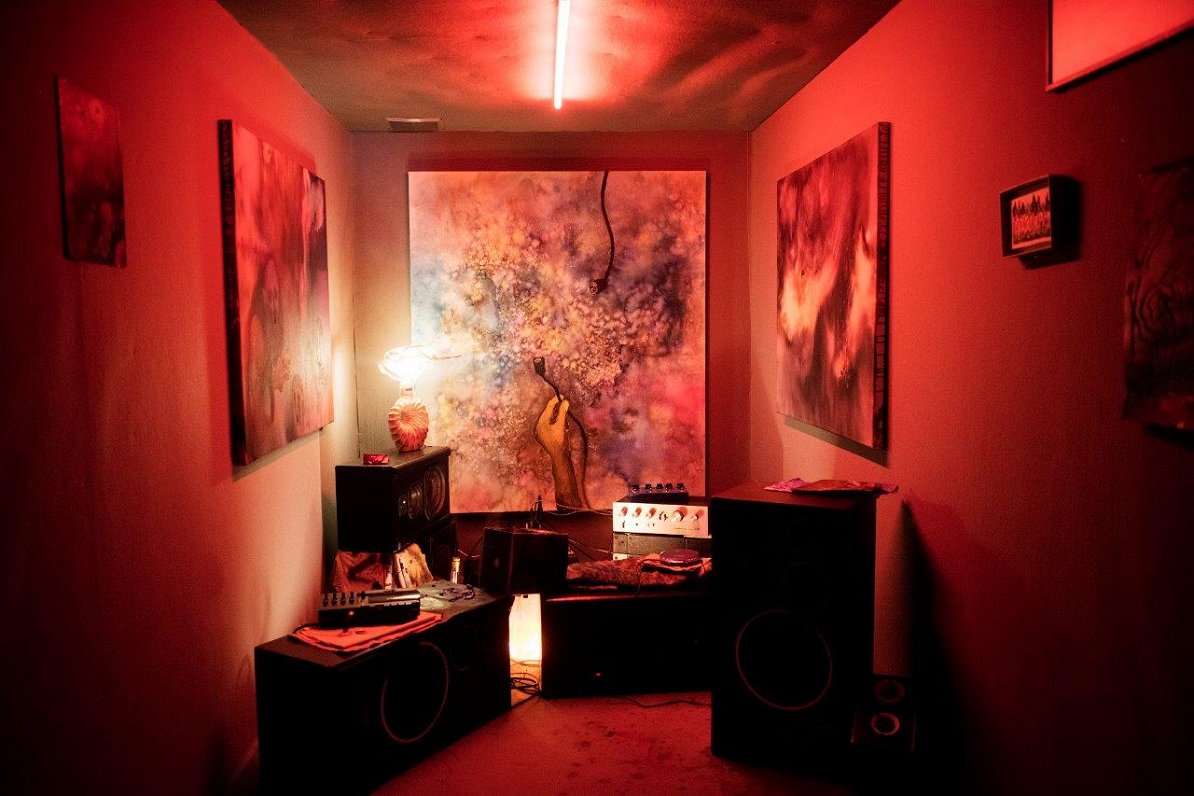
Kaspars Groševs multimedia installation “Another Room”.
Photo: Kristine Madjare
–
–
“No Blessing for Evil Will Come”
Līga Spunde’s work “No Blessing for Evil Will Come”, which was shown at the Survival Kit 11 festival in the former building of the Museum of Literature and Music (September 4 – October 4), was also nominated for the award.
LNMM exhibition curator Līna Birzaka-Priekule substantiated the nomination: “Līga Spunde’s work” No Blessing Will Be Evil “is a story about the author’s own relationship with spiritual practices, as well as references to the situation of American David Veter – his life due to combined immunodeficiency syndrome as a result of the decision of doctors and parents had to spend indoors. The work of art touches on a number of important issues in any society, related to the medical system, which often ignores the emotional and psychological needs of patients, over-protecting people close to them, ignoring their own desires and needs and trapping them in the selfish “bubbles” of their expectations. with a focus on pseudo-spiritual and questionable practices as the only possible salvation.
From the exhibition to the exhibition, Līga Spunde convincingly shows a phenomenal ability to realize her ideas in the material, which thus also becomes a part of the message.
In this case, the altar angels in the work, the white fence with the medallions and mascots of the saints, as well as the dead rats made of soft polyurethane foam, a material often used in the insulation process, become a metaphor for the wider context. In the video work, the dialogue of images created in a neutral environment, at times the monologue, only further enhances the feeling of distance and alienation.
I believe that the nomination is justified by Līga Spunde’s ability to create a unified space in content and form, in which a particular story becomes a metaphor for this or another time of crisis and its imprints on the emotional health of society. ”
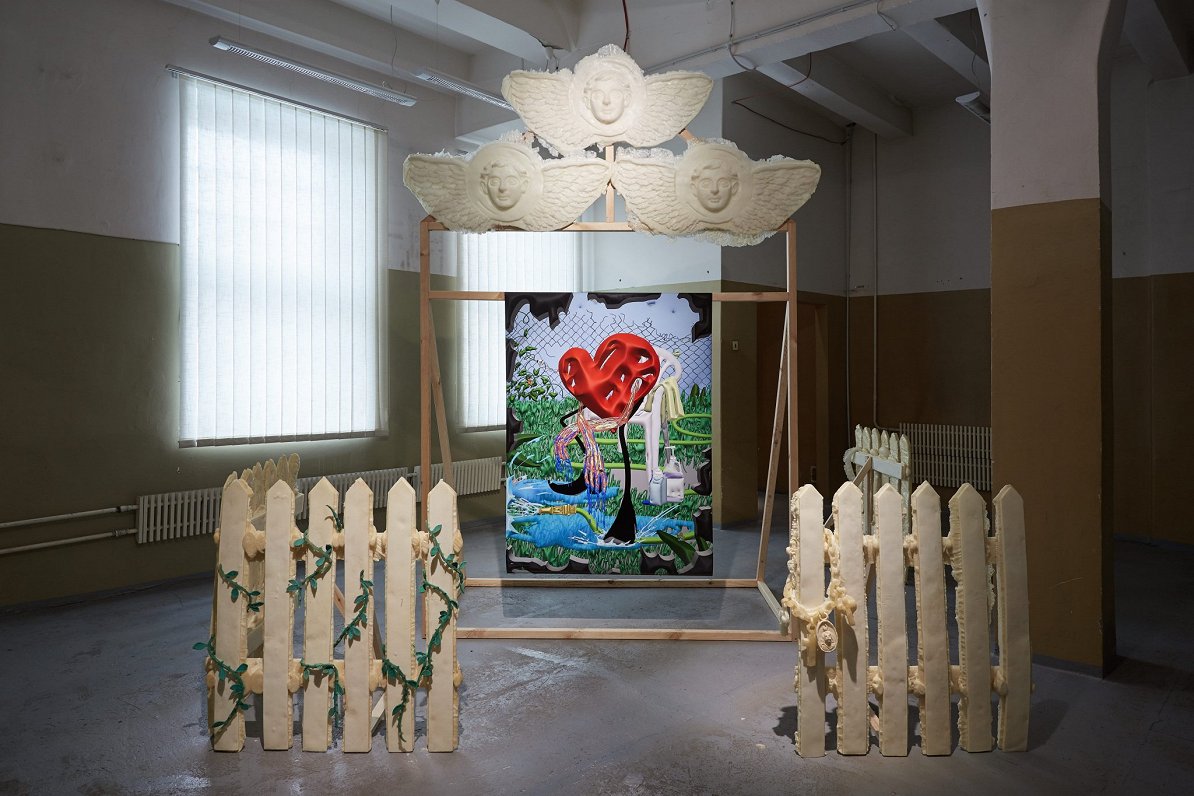
Līga Spunde’s work “No Blessing for Evil Will Come”.
Photo: Madara Gritāne
–
–
“Rhythms of Life” and “Positron”
The group of experts has also nominated Valdis Celms’ kinetic sculptures “Rhythms of Life” and “Positron” at the exhibition of the second Riga International Biennale of Contemporary Art “Everything Blooms at the Same Time” (August 20 – September 13).
Curator Elīna Sproģe emphasized in the justification of the nomination: “The works of the Latvian kinetic art pioneer, artist Valdis Celms, realized within the framework of RIBOCA2, are thrilled with their contemporaneity and aesthetically high-quality technical solutions. Two objects created in the spirit of constructivism have been lying in the format of ideas and sketches since the 1970s and have materialized only this year.
The kinetic large-format sculptures “Rhythms of Life” and “Positron” resonate with the changing states of life and man and the principles of world structure through mechanized movement, at the same time pointing to Stump’s visionary approach to creating art (then design) objects 50 years ago.
Through these ornamental constructions, he connects the smallest elementary particles and the expanses of space, allowing the viewer to feel emotionally and completely physically as part of a larger whole. ”
“When it seems that the dialogue between the post-industrial environment and post-contemporary art has acquired the outline of self-sufficient rituals. When it seems that all the arguments and rhetorical techniques have already been applied. When all manifestations are confirmed. When it seems that nothing will pull the viewer out of the state of easy trance, then the goal of the endless pilgrimages of art is the rhythms of life.
Valdis Celms’ work focused on the spiritual journey of Latvian and Latvian art and nation throughout the last half century. Context of locality and globalism; aesthetic interactions of kinetic and craft arts (design, artistic construction, industrial art, technical aesthetics); the challenge of neosacrality and neospirituality to the last knights of industrial society and post-cosmic metaphysics, all of which suddenly focused on a single work of art. In one work, who expressed everything he wanted to see at that moment. Everything is said. Rhythms of life, ”added the professor and vice-rector of the Latvian Academy of Arts in his studies and research work Dr.Art. Andris Teikmanis.
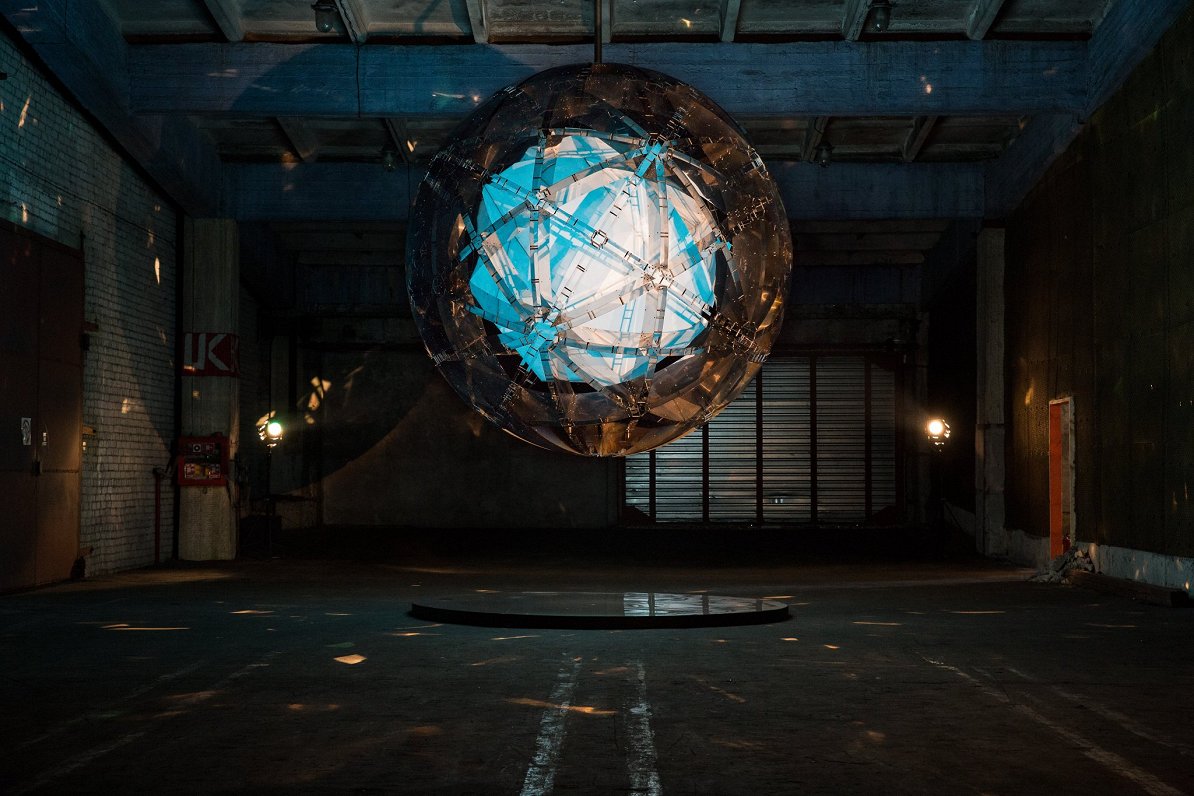
Valdis Celms kinetic sculpture “Positron”.
Foto: Hedi Janso
–
–
In total, experts nominated eight art events during this period, including:
- Alnis Stakle’s exhibition “Neither Horse nor Tiger” at the Latvian Museum of Photography (27.08. – 04.10.)
- Linda Bolshakova’s work “Seminar Futures: Seedlings for Future Coexistence” was made in collaboration with Alvi Misjuna, Anna Ķirsi, Dr. biol. Daci within the framework of Kļaviņas Sculpture Quadrennial in Riga urban environment (05. – 31.10.)
- Atis Jākobsons exhibition “Presence” in Bauska Museum (11.09. – 06.10.)
- Ieva Iltnere’s exhibition “Evening of Slides” in the gallery “Art XO” (03.09. – 10.10.)
Expert nominations for the events of the first half of 2020 are available awards website.
Experts in 2019 – 2020
From January 1, 2019 to the end of December 2020, the PurNītis Prize expert working group includes Līna Birzaka-Priekule, curator of LNMM exhibitions, art scientist, Laima Slava, editor-in-chief of Neputns publishing house, professor and vice-rector for studies and research at the Latvian Academy of Arts. . art. Andris Teikmanis, philosopher Kārlis Vērpe and founder and manager of the gallery “Careva” Alise Careva. From July 1, 2019, curator Elīna Sproģe has started working in the team of experts. She replaced the curator, art theorist Kaspars Vanags.
From January 1, 2020, Solvita Krese, a curator, art historian and head of the Latvian Center for Contemporary Art, has started working in the team of experts. She replaced art scientist, curator Ieva Kalniņš.
Purvītis Award
The Purvītis Prize was founded at the beginning of 2008 and is presented every two years. The first Purvītis Award was received in 2009 by Katrīna Neiburgs for the video work “Solitude”. The winner of the second Purvītis Prize in 2011 became the artist Kristaps Ģelzis for the solo exhibition “Maybe”. The third Purvītis Prize was won in February 2013 by Andris Eglītis for the solo exhibition “Earthworks”, the fourth Purvītis Prize in 2015 was presented to Miķelis Fišers for the solo exhibition “Injustice”, for the work “Song”. In April 2019, Ieva Epnere received the sixth Purvītis Prize for her work “Sea of Living Memories”.
The Purvītis Prize competition in visual art is organized by the Latvian National Museum of Art in cooperation with the museum’s patron SIA “Alfor”. The Association “Art Platform”, the cultural project agency “INDIE” and the agency “PRAE Public Relations” participate in the implementation of the Purvītis Award.
–
